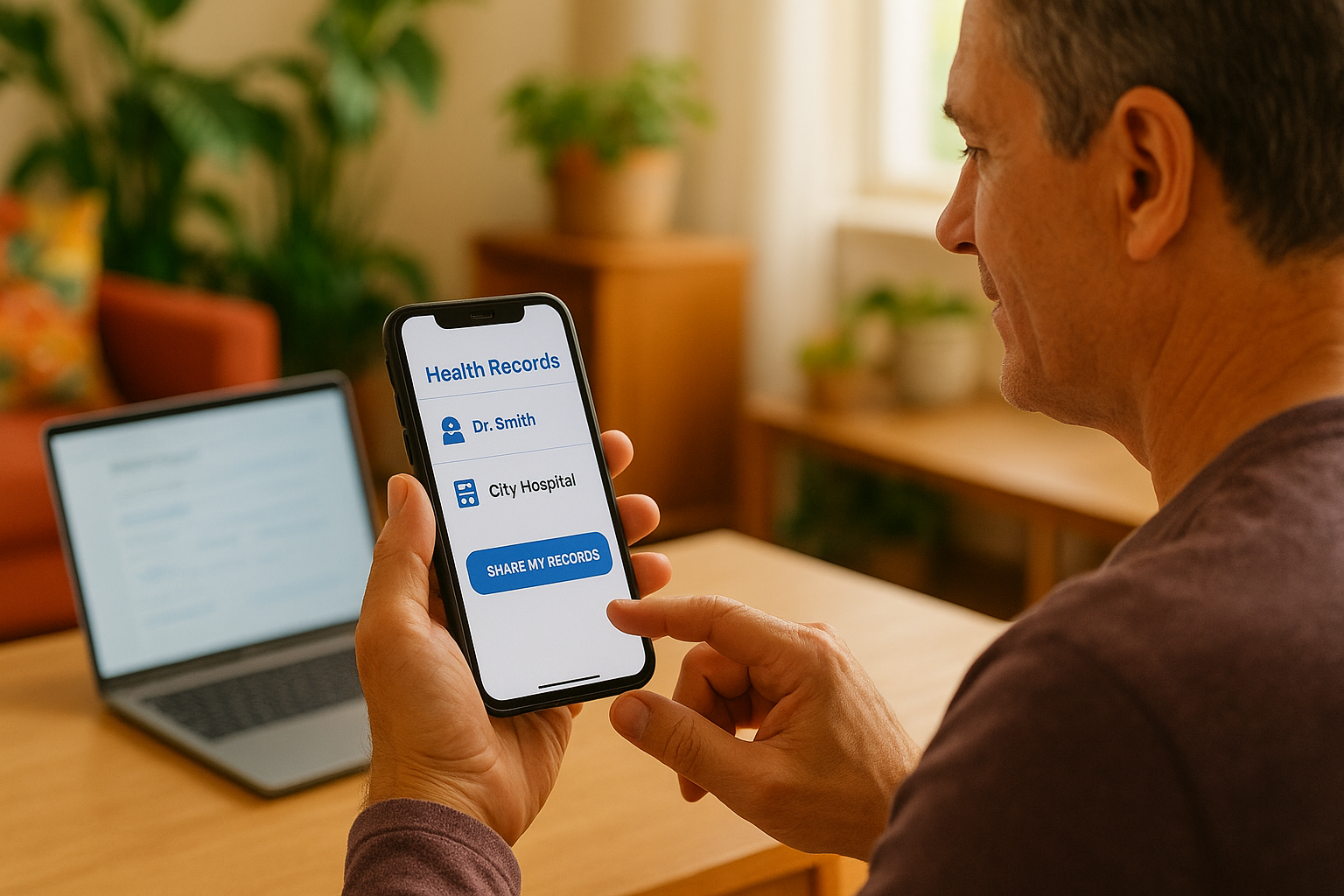The Smarter Way to Collect and Use Patient Data
for Clinical Trials, Research, Registries, and More
In trials, research programs, and registries, the speed and quality of results depend on the ability to access complete, standardized patient data quickly and securely. But today’s data is locked away in multiple EHRs, payer systems, and health apps, often requiring weeks of manual work to collect and verify. Meanwhile, strict compliance requirements and inconsistent patient engagement add friction to already tight timelines.
Without a better way, valuable opportunities to accelerate enrollment, confirm eligibility, and increase participation are lost for clinical trials, research, and registries. In this blog, we discuss an approach to addressing these challenges head-on with real-world use cases. Read about how a platform designed for patient-mediated exchange that adheres to FHIR standards, meets ASTP/ONC compliance requirements, and incorporates strong security practices can truly make a difference.
Common Barriers to Efficient Patient Data Collection
Manual processes that slow down onboarding with a risk for errors
Patient records scattered across multiple EHRs and sources
Compliance and privacy requirements that complicate workflows
Patient confusion or drop-off during consent and data-sharing steps
Turning Challenges into Action
These challenges aren’t inevitable. Patient-mediated exchange, when conducted via a platform that supports FHIR standards, meets ONC compliance requirements and incorporates strong security practices, can make a huge difference.
Providers can access complete histories sooner without adding work for staff.
Research teams can verify eligibility and monitor outcomes with source-verified data.
Digital health products can onboard users with accurate records instead of manual uploads.
EHR vendors can support access requirements using FHIR APIs they already support.
Patients can approve data sharing in minutes and keep connections open for ongoing updates.
The following examples show how organizations have implemented these capabilities, turning a complex, manual process into a streamlined workflow that benefits both patients and research teams using Patient Connect.
Real-World Use Cases for Patient-Mediated Exchange
Large-Scale Patient Registry for Ongoing Research
A leading research organization managing a registry of more than twenty thousand patients needed a way to collect health records from multiple EHR systems into a separate database, which they could update with their findings. They also needed to store each participant’s consent and maintain engagement beyond the completion of clinical trials.
With Patient Connect, the organization had two enrollment options:
API integration to upload patient records after confirming identity and linking them to the registry identifier.
Direct patient invitation flow for self-authorization.
Patients received a secure link in the direct invitation flow, selected their healthcare provider from a directory, and authorized EHR data sharing. Once authorized, the platform aggregated patient records from various providers into a secure FHIR server structured for ongoing research. The entire process carried the organization’s branding, reinforcing participant trust.
Impact at a glance:
Higher patient participation rates
Faster enrollment into the registry
Reduced manual data entry and associated errors
More complete and accurate datasets for research
Streamlining Clinical Trial Onboarding
A clinical trial sponsor conducting a blinded study at one of the leading hospitals in the U.S. needed a fast, compliant way to collect Medicare claims from participants without exposing any identifiable patient information.
With Patient Connect, the sponsor sent secure invitations for participants to connect their Medicare accounts and approve data sharing through CMS Blue Button 2.0. Claims were retrieved in FHIR format and stored in a secure FHIR server for trial use. Because the trial was blinded, identifying details were anonymized before delivery. Coordinators worked with complete, consistent information without manual entry or reliance on patient recall.
Impact at a glance:
Shorter trial cycle times
Increased participant retention and engagement
Fully compliant, anonymized datasets delivered securely
Less reliance on patient recall or manual record entry
How You Can Use Patient Connect for Your Use Case
Sharing health data doesn’t have to be complicated. Patient Connect simplifies it for you, so you can:
Invite patients with a simple link or a more customized process
Let them choose their health systems and give consent to share their data
Receive their records directly in your workspace, ready to review or import
Customize the journey for specific use cases such as clinical trials, research and more
See how it works from start to finish, including both a quick-start example and an advanced configuration. Watch the video
The Scale of Impact
The benefits for a single trial, registry, or research program may seem localized, but when multiplied across use cases, the cumulative effect is substantial. Higher enrollment rates and shorter cycles mean more effective treatments can be evaluated and deployed sooner, reducing complications, preventing disease progression, and improving patient quality of life.
Broader Applications
While these examples focus on disease registry and clinical trials, the same approach works for research, decentralized studies, post-market surveillance, digital health programs, and other patient-centered initiatives. Any scenario that depends on timely, standardized patient data can benefit from a process that combines secure consent, identity verification, and multi-source data aggregation, while keeping the patient experience hassle-free.
Better outcomes start with better data
Whether you’re running a clinical trial, maintaining a registry, or building a digital health program, a secure and patient-friendly way to collect and standardize information can change the pace and quality of your work.






